Green Prince Of Darkness….
Exposed
Today’s Guest, November 28, 2020
About the author: Joseph A Olson, PE: Co-founder of Principia Scientific Intl. and co-author of the ‘Slaying the Sky Dragon – Death of the Greenhouse Gas Theory’ the world’s first full-volume debunk of the greenhouse gas theory. Retired Texan engineer and impassioned science writer, Joe Olson PE is a respected innovative thinker with over 100 major civil engineering and climate-related articles to his name. Olson is famed as a staunch advocate of the traditional English scientific method and combines a wealth of hard-edged industry experience with an insightful and deft writer’s touch to convey complex scientific concepts in a unique literary style.
There were a myriad of factors that contributed to the demise of the British Motor Industry in the mid seventies. The storied brands of Jaguar, Bentley, Aston Martin and MG of the automotive and Triumph, BSA and Norton of motorcycle industry all suffered under onerous labor union contracts and government ownership and controls. All of these brands also suffered with defective electrical components produced by the Joseph Lucas Company.
Quality control issues were so bad that a popular bumper sticker for those marquees read “All of the parts that fall off of this car are of the highest quality British craftsmanship”.
While purist can indulge a certain level of hardship with mechanical devices, they have little patience for the electrical gremlins that did not affect other manufacturers. For this reason, Joseph Lucas was nicknamed “The Prince of Darkness”.
Today we have a new Green Prince poised to plunge the western world into a self imposed darkness. This Prince first creates the fiction that Carbon causes climate change, then adds the fable that green energy exists which can dispel this nonexistent problem. The entire range of ‘green solutions’ are all nonsensical. We’ll limit this discussion to just solar cells and batteries, saving bio-fuels and windmills for another time.
The Sun Gives Us Nothing for Free
As alluring as the premise may be, the promise of solar energy is not free. The first solar cell was created in 1883 by Charles Fritts using a sheet of Selenium with thin Gold facings. The Sun radiates approximately 1000 watts per square meter at maximum. The Fritts cell produced 10 watts per square meter or 1% efficiency. The Russell Ohl patent of 1946 is considered the first modern solar cell. Today’s solar panels are high purity Silicon with a light doping of Phosphorus and Boron to provide breaks in the Silicone for electron movement.
The Universe is a radiation chamber with EMR and particle emissions from all concentrated mass, and decay particles from individual atoms. Solar radiation strips protons from Nitrogen atoms, creating Carbon-14. Stripping exposed electrons is even easier. Silicon has four rather stable outer shell electrons in an orbit that can hold eight electrons. Boron has five outer-shell electrons, and Phosphorus has only three. Silicon forms a cubic crystal grid, and slightly impure Silicone matrix sheets can then be embedded with Boron and Phosphorus atoms.
When exposed to sunlight, the Boron atom losses it’s easily excited fifth electron, which travels the Silicon matrix using the Phosphorus “hole” to the conducting collection grids on both sides of the photovoltaic cell and permanently exits the cell.
Only segments of the solar spectrum activate this flow and it must be captured on both sides of the panel to create a circuit. The required capture grid blocks some of the incoming energy and the net result is 10% efficiency, or approximately 100 watts per square meter, and only within limited ambient temperature ranges which prohibit lenses or mirrors for simple amplification.
Efficiencies as high as 40% are available with exotic materials, but then one must address the ‘high cost of free’, which applies to every ‘green’ technology. Silicon, Phosphorus and Boron are common elements, but to mine, refine and bring on line has a cost. That cost is reflected in ‘cost payback’ of 5 to 7 years depending on the system and level of government forced subsidy. But these costs are based on low cost carbon based energy systems providing these materials. Regardless, this is a ONE-TIME, ONE-WAY EROSION PROCESS with a total system life of less than 20 years.
Solar cells produce only Direct Current, which is electric power by the migration of electrons, and in typical PV cells is only 1.5 volts. Alternating Current creates a voltage, but transfers power as a wave, rapidly cycled between positive and negative, with little actual electron migration. The first municipal Edison power systems were DC, but transmission loss and multiple voltage issues prevented success, and the Tesla-Westinghouse developed three-phase AC system became the driving force for modernization.
Converting DC to AC involves a conversion loss in an inverter, boosting to higher voltage and converting to more efficient three phase causes additional losses due to the Carnot Cycle. If you connect a hydro-turbine to a pump, you can only pump a portion of the water flowing from a dam into water pumped back to the dam. If you use the hydro-turbine to generate electricity, then use an electric pump to pump water back ablve the dam, then the losses are even greater. The combined losses converting 1.5 volt DC to usable 50 kV, three phase transmissible AC power is forever technically impossible.
Ignoring just these physical limitations, supposed science leading publications like Popular Science, Popular Mechanics and Discover, regularly show fanciful space based systems where vast arrays of solar panels, positioned around the planet, beam “sustainable” microwave energy back to Earth based antennas to provide 24 hour service. Never mind all the limitations above, now add the Carnot loss converting to microwaves on both ends of this system. Limitations to the field density of this transmission would require massive antennas, or large, “no fly zones” for humans, and instant on the fly cook zones for any stray birds.
To overcome solar wind and lunar gravity changes, these microwave transmitters would require constant realignment, or the transmissions would wander off the receiving antenna. The fact that this science fiction is presented as anything other than TOTAL FICTION, is proof that these publications are all “pop” and no science.
Much like paying your Visa bill with your Master Card, this parasitic ‘clean’ energy cannot provide the ‘spare’ energy to avoid ‘dirty’ energy. There is a constant loss of electrons in this system and power production erodes over time until, at twenty years, they are useless. The Silicon sheets are protected with glass covers which require periodic cleaning and are subject to damage from hail and wind debris.
Solar cells efficiency is also a function of azimuth angle and reduces with higher latitudes, and seasonal tilt angle. Systems with tracking ability have higher efficiency, but not recoverable installation costs. You get progressively less energy at the poles, precisely at the time when you need the MOST energy. To have usable power over extended periods requires a storage system. The most common of these is the battery, which is the heart of that ‘other’ planet saver.
Dream Green Machine
Soon Electric Vehicles, aka EVs, will replace the nasty internal combustion engine and humanity will be in harmony with the Universe. The transition technology in this race is the hybrid auto and the front runner is the Toyota Prius. This undeniable marvel has a 120 pound Nichol-Metal Hydride battery that costs $3500 to replace or approximately $20 per pound. There again, a cost based on carbon energy providing the material production.
The ‘Metal Hydride’ portion of these batteries includes the rare Earth elements of Lanthanum, Cerium and Neodymium. These required green components do not willingly join the green cult movement. To have your treasured EV, this planet must be mined and those elements must be extracted and refined.
Due to chemical erosion thru use, these batteries have an eight year or 100,000 mile warranty period. You can save $450 per year on gasoline if you spend $450 per year on a battery. You can walk forever up the down escalator and still get nowhere. There is no way to improve or even ‘sustain’ our carbon-based life forms without expending some geologically stored carbon energy.
To the blue-green Hollywood Eco-Smurfs and Na’vi wannabe’s, we are NOT living on a green Pandora that needs rescue from the evil RDA mining company. Humanity will not be saved by mythical noble savages or a forced return to a primitive life style. It took most of the nineteenth century to formulate the Laws of Thermodynamics. It took most of the twentieth century to apply those laws to the benefit of society. There will be no solutions to problems in the twenty first century that do not comply with these laws.
Curiously missing from the Climatology degree plan is any mention of Thermodynamics. Avoidance of these Laws must give license to break these Laws. Thus clouds can have a negative factor during the day, with their pesky ‘albedo’ effect reflecting sunlight back into space and then just hours later have a positive effect by blanketing the warmth at night….a reflector or greenhouse at the whim of a Climatologist.
Climatologist can ignore the specific heat and thermal mass of the entire planet and provide a computer model PROVING that the trace human portion, of a trace gas, in the trace portion of the Earth mass that is the atmosphere, is the single greatest climate forcing factor. They can then empower this three atom molecule the unique ability to radiate in a reverse flow in opposition to all proven Thermodynamic Laws. This is lawless behavior, which is by definition, criminal behavior.
Lady Gaga’s Underwear
If you don’t know what color underwear this pop icon is displaying for us today, it is only due to your willful avoidance of the main stream media message. If you recognize the need to open our ‘Pandora’ and mine some ‘Unobtainium’ to improve life for all humanity, then we need your support. Awaken your friends and family to the futility of the Green Utopia.
This manufactured crisis and faux consensus has been brought to you with your tax dollars by your government officials. This has been a bi-partisan effort. Think of the RNC-DNC Crime Syndicate as the ultimate Costa Nostra upgrade. The IPCC, EPA, DOE, NSF and NAS are all guilt of lying, suborning scientific perjury and attempted tax collection fraud.
There have been five high profile whitewash attempts since Climate-Gate, the blessed Hadley hacking event of Nov 19, 2009 by Penn State University and the British government. But now the cherry picked science and the cherry picked whitewash inquires face a serious challenge.
If the ‘Hockey Stick Maker Mann’ did indeed knowingly delete conflicting data to force a curve match of proxy CO2 to match his proxy temperature, then he has no protection under academic freedom. Virginia Attorney General, Ken Cuccinelli, filed a Civil Investigation Demand and was rejected by Mann’s former employer, the University of Virginia. In a hearing, July 13, 2010 the judge ruled that UVA must provide this material within one week and prepare for oral arguments in a month.
Now a jury of peers, who are NOT government paid academics, will hear evidence denied to skeptics by countless Freedom of Information Act requests. A legitimate inquiry will for the first time review the ‘science’ of this faux hypothesis. The evidence that will pour forth in this court will be the final death knell for the warmists and their elite handlers. Humanity does not need to be plunged back into the darkness of their green hell.
As America struggled to avoid the world conflict of the 1940’s, then Prime Minister Winston Churchill made this observation, “You can always count on Americans to do the right thing – after they’ve tried everything else.” We do not need try everything else. We know science, we know what works and we know when our leaders are systematically lying to us. If you reject the green group think and feel true science, true debate and true democracy are humanity’s best hope, then come join us. We are the anti-barbarians.
Environmental Side Note
“The way to crush the bourgeoisie is to grind them between the twin millstones of taxation and inflation” ~ Vladimir Lenin
Every ton of pure Polycrystalline Silicon, refined for photovoltaic use, produces EIGHT tons of Silicon Tetrachloride and Ammonium Chloridadized Silicon TOXIC waste. Similar levels of toxic waste are produced in the mining, refining and production of all batteries and the rare Earth elements needed for DC motors in Electric Vehicles and windmill DC generators.
Western monarch-monopolists have no use for meritocracy and have been at war with freedom and property rights for eternity. When the Chinese democracy movement threatened Universal Democracy at Tiananmen Square, it was feudal elites who rushed to prop up the Chinese dictators with western capital and western technology. The trade off was Chinese slave labor and environmental degradation to destroy competitiveness.
The reason that China is the main producer of all of these ‘green products’ is that China has a vast slave labor population, no property rights, no land use restriction and NO environmental restrictions. Just more proof of the blindness induced by wearing green goggles. We are borrowing money to subsidize non functional green energy to supplant functional energy….taxing, regulating and inflating our way to extinction….the ultimate darkness.
BOOTNOTES
Since This article was published, so much of the Green Energy lie has emerged that even the far left activists, Michael Moore felt compelled to expose the fraud. His movie “Planet of the Humans” was available on FewTube briefly, removed for copyright strikes. This Sky News Australia newscast has a good summary.
See: “Exposing Green Energy Fraud” > https://youtu.be/c4NvDaMQs6g
You can also find Joe Olson at PRINCIPIA SCIENTIFIC INTERNATIONAL, legally registered in the UK as a company incorporated for charitable purposes. Head Office: 27 Old Gloucester Street, London WC1N 3AX.



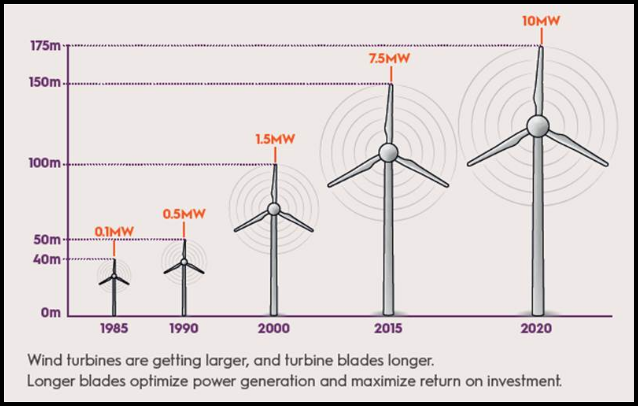
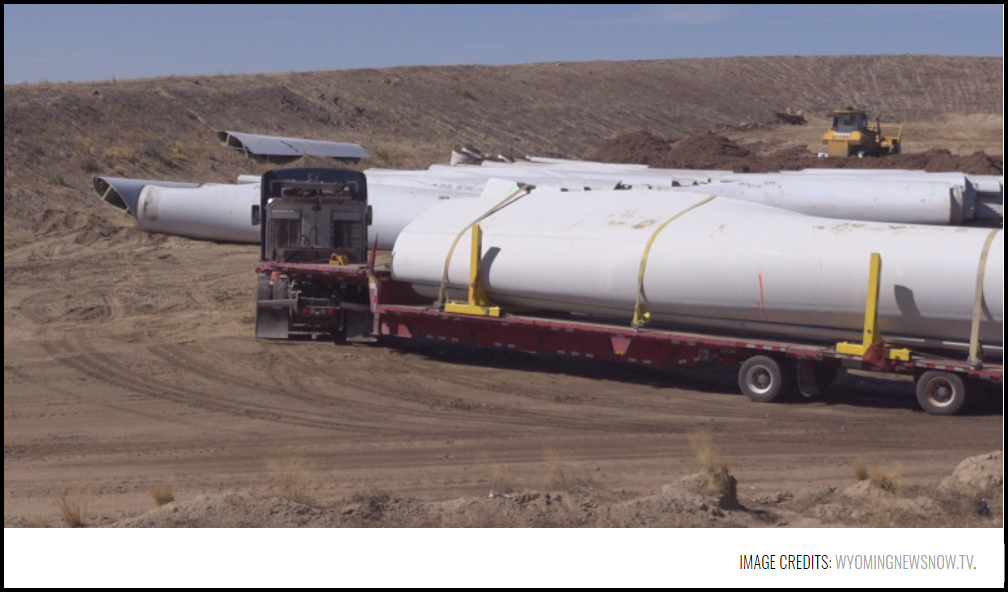
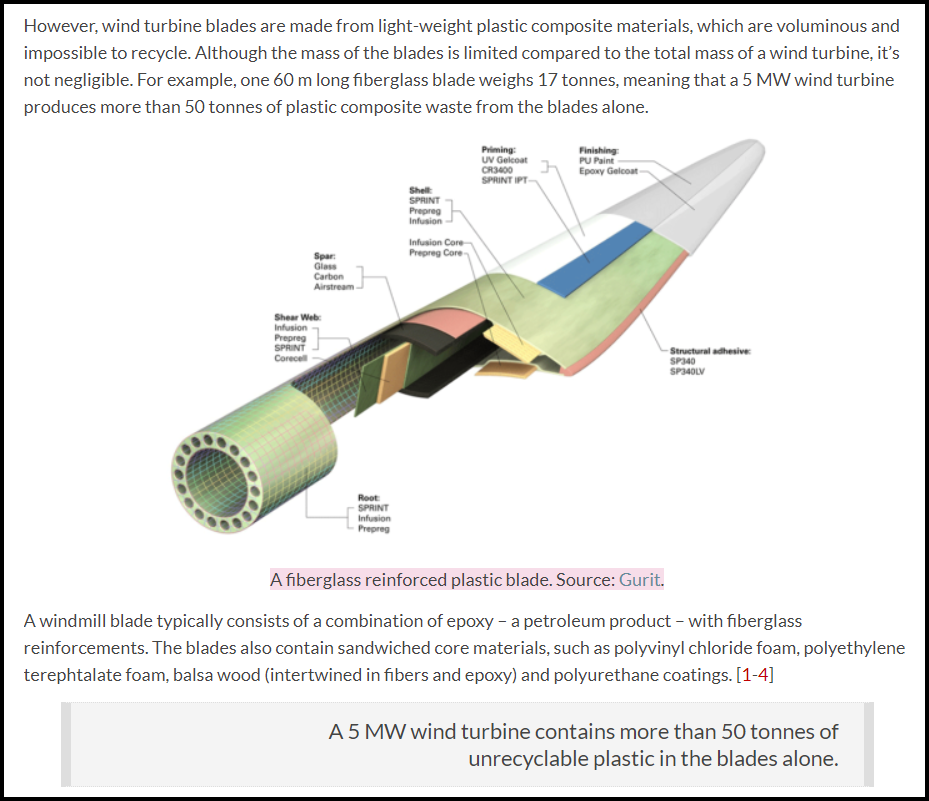
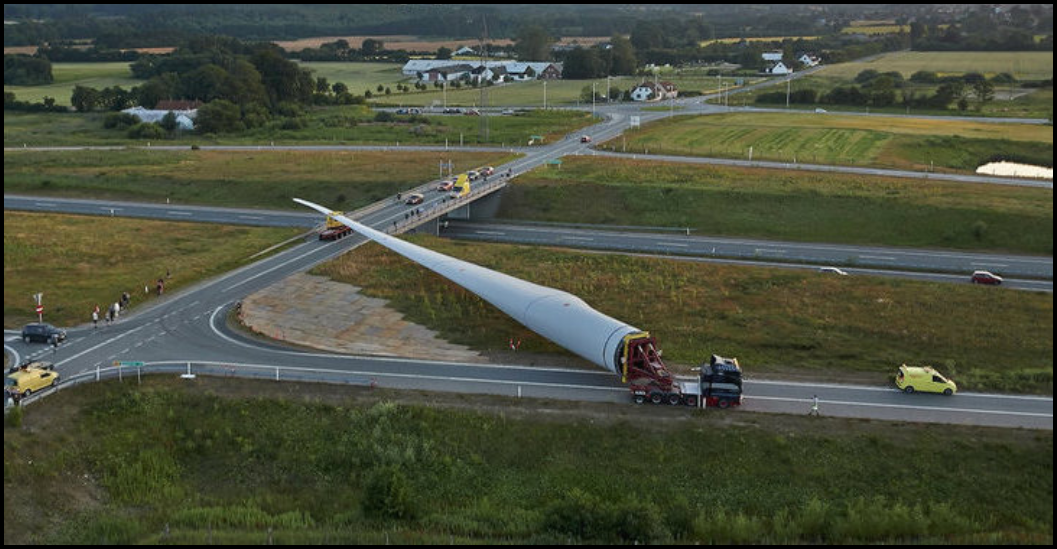
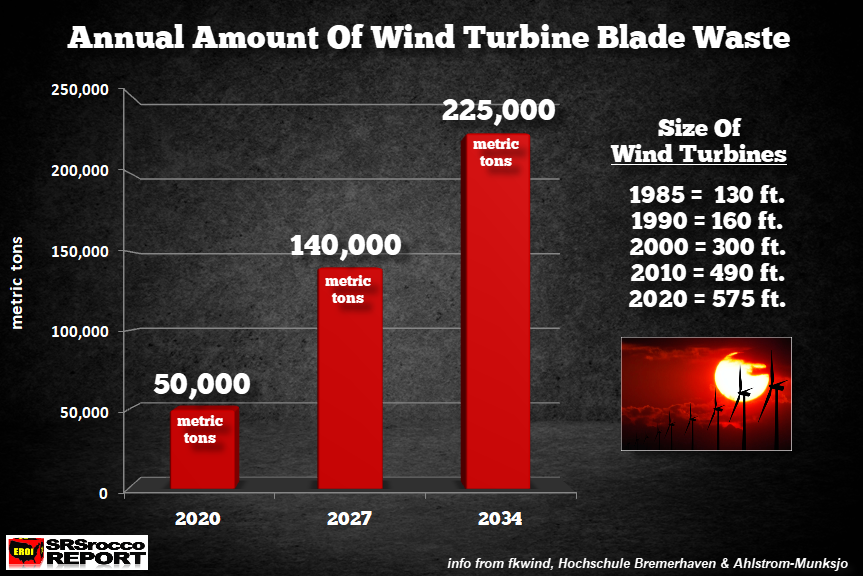










 The really interesting difference concerns hydro, solar and wind power. BP’s higher figure isn’t because it is more bullish on these. Rather, in order to make the renewables figures comparable with the ones for fossil fuels and nuclear power, BP grosses them up as if they also produced waste energy. The IEA doesn’t do this, so its figure represents just the energy derived from a solar panel, wind turbine, or hydro plant. The IEA figure is 36 percent of the BP one, similar to the 38 percent conversion factor BP uses to adjust the data.
The really interesting difference concerns hydro, solar and wind power. BP’s higher figure isn’t because it is more bullish on these. Rather, in order to make the renewables figures comparable with the ones for fossil fuels and nuclear power, BP grosses them up as if they also produced waste energy. The IEA doesn’t do this, so its figure represents just the energy derived from a solar panel, wind turbine, or hydro plant. The IEA figure is 36 percent of the BP one, similar to the 38 percent conversion factor BP uses to adjust the data.



